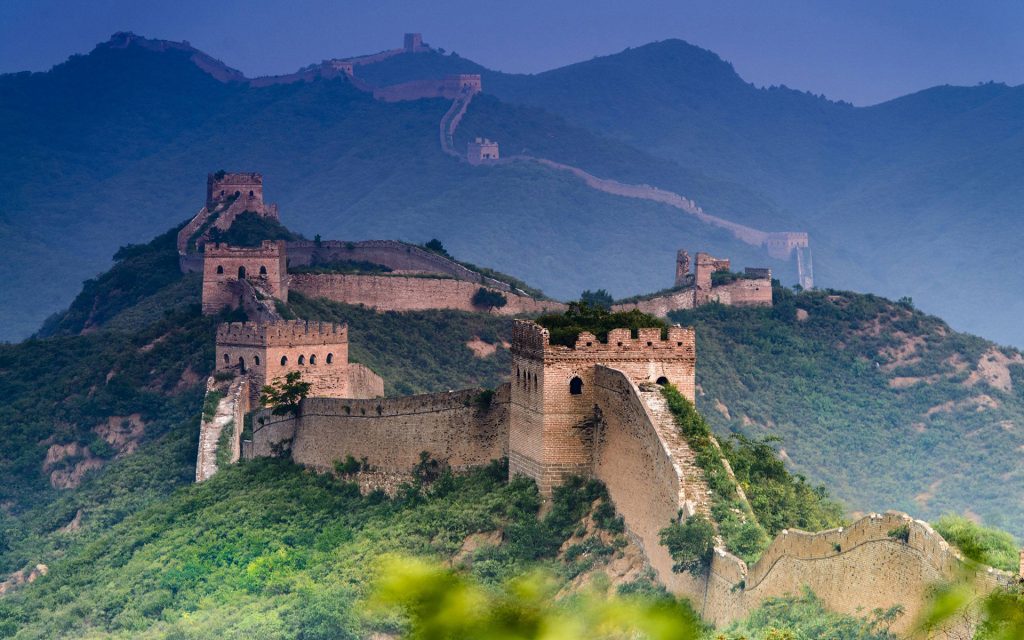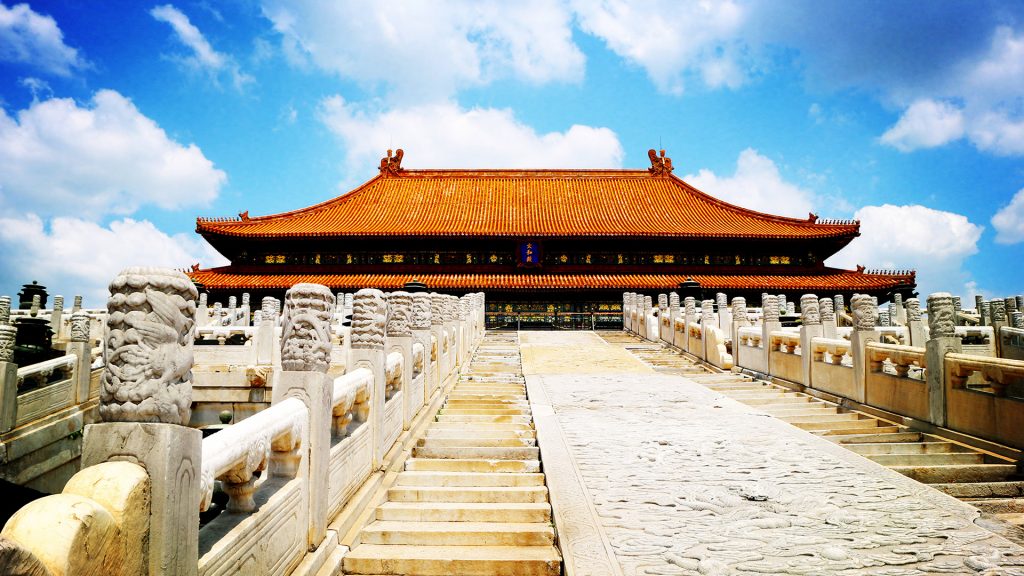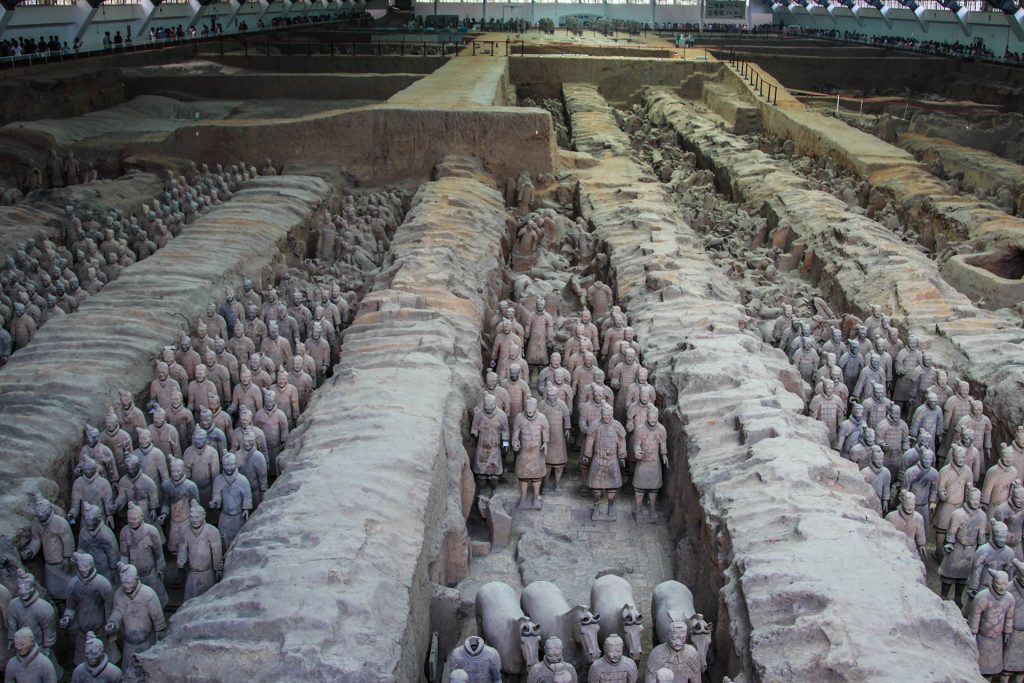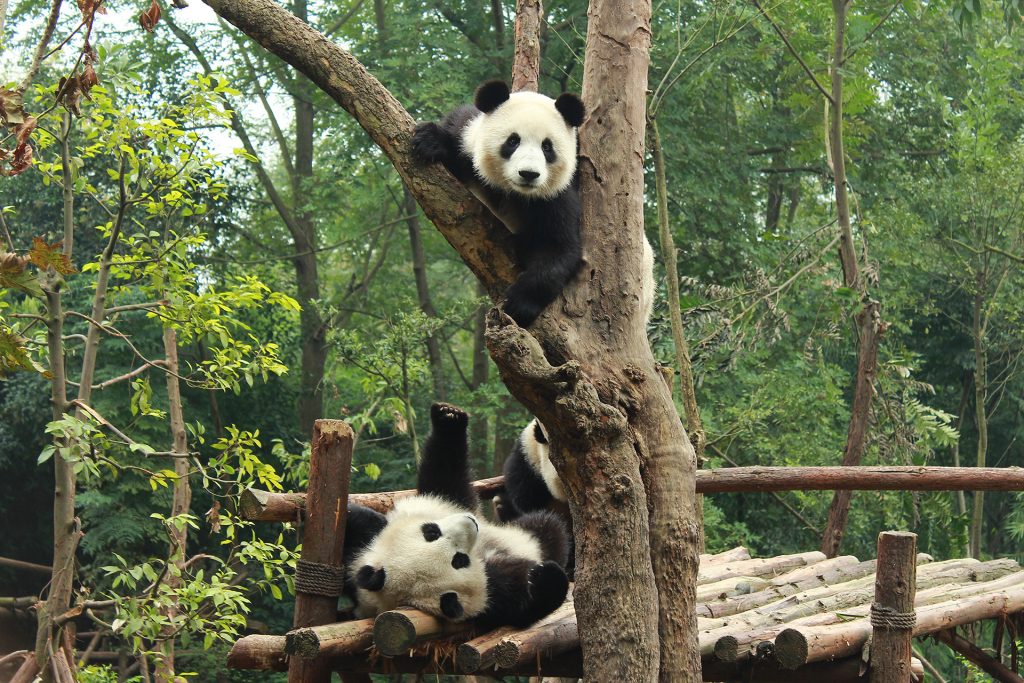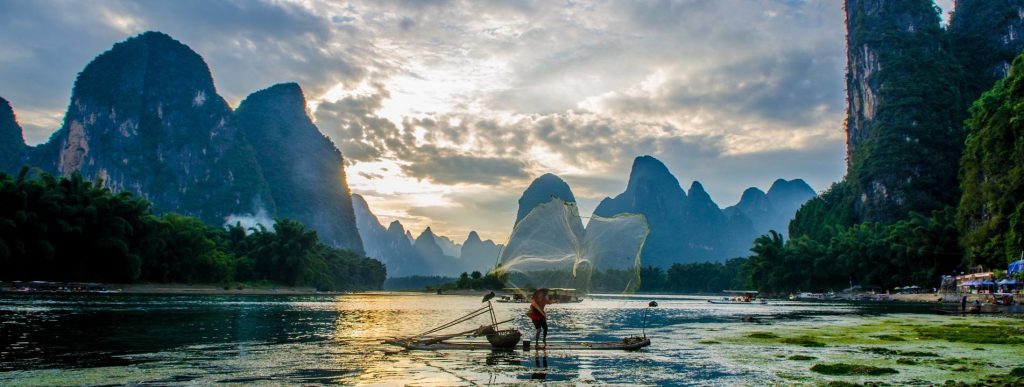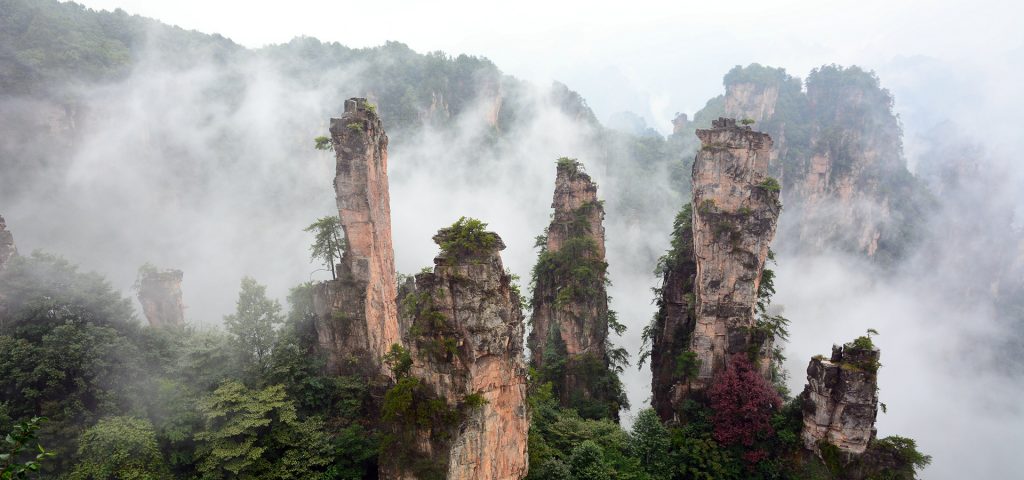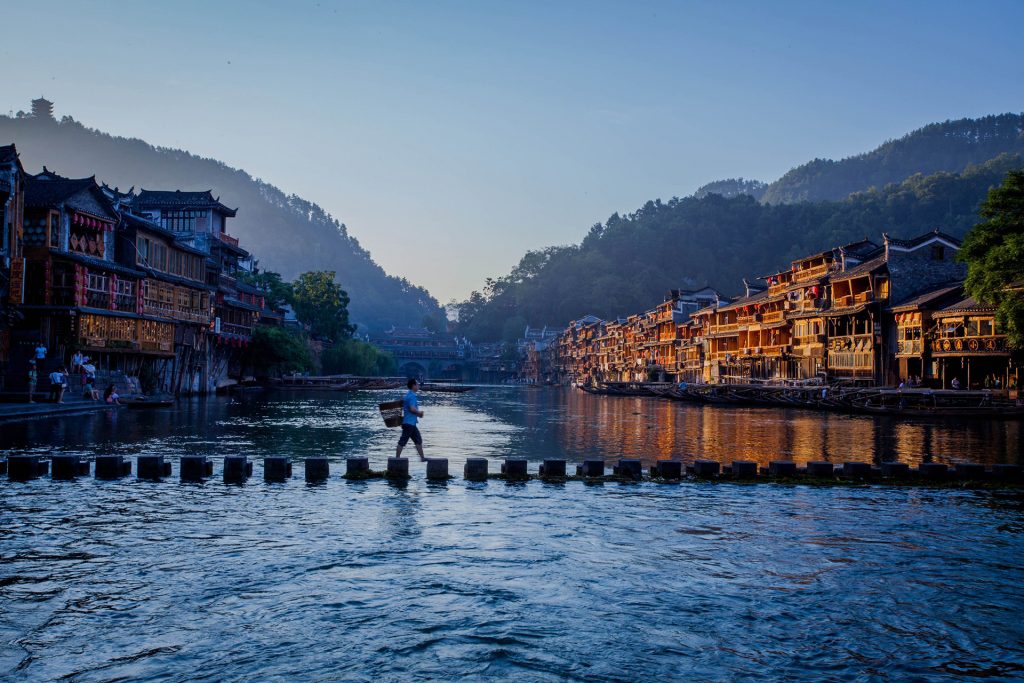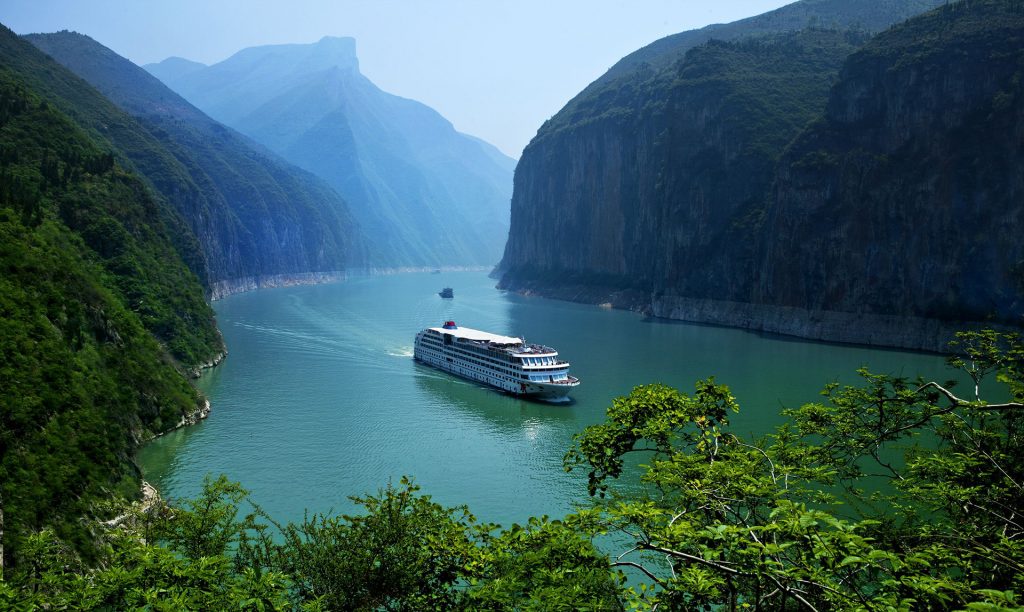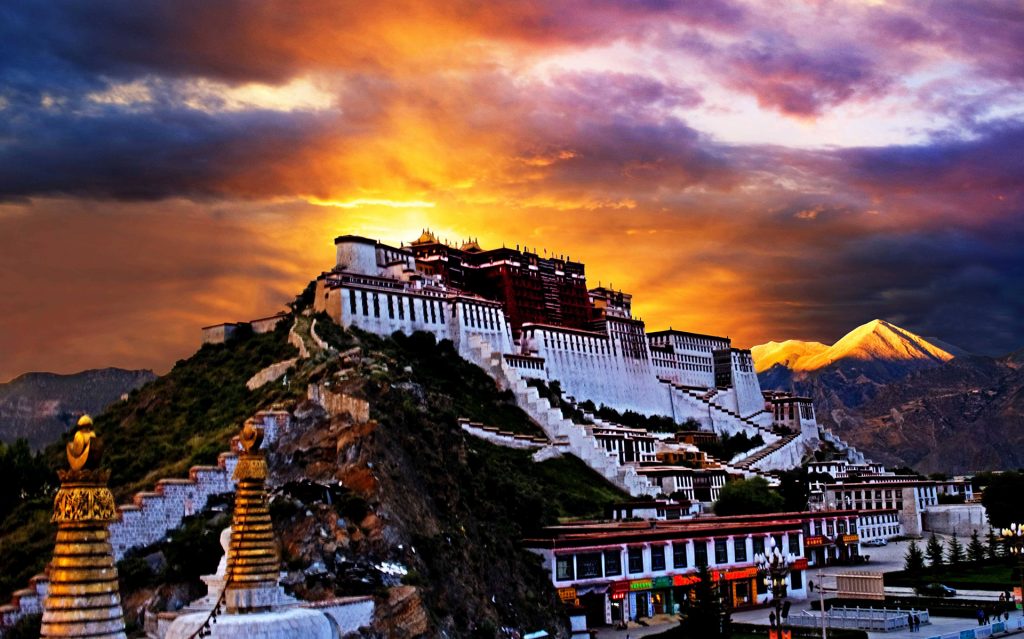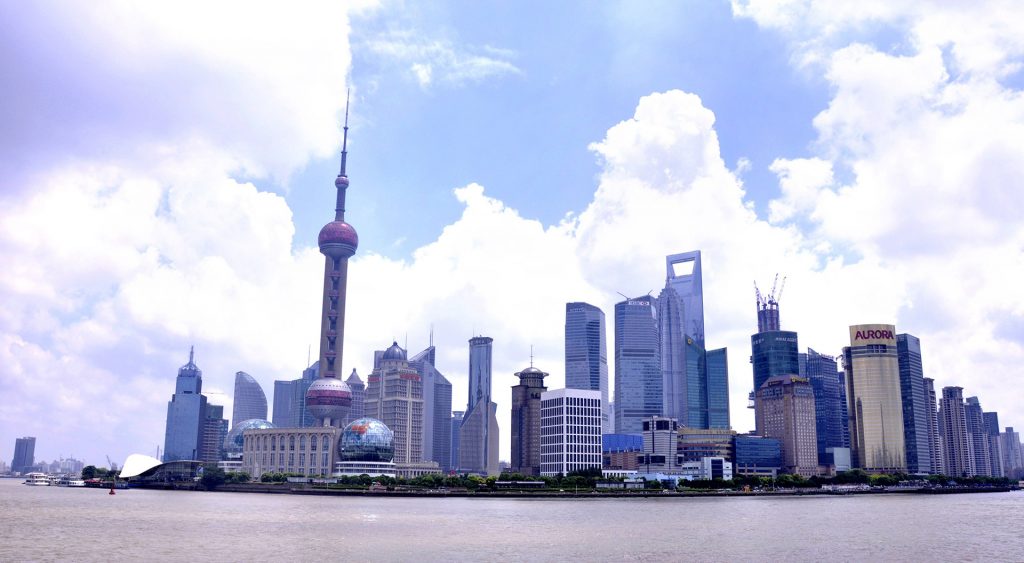With a vast territory and a long history, China offers so much to visit and explore. Definitely, there are several places, attractions, activities in China that travelers must mark in their itineraries and travel plans, such as climbing the Great Wall, cruising along an ancient Chinese town, newly famous Avatar styled mountains and glass bridge skywalk etc.
This list of China Top Ten Attractions can help tourists avoid the pity of missing worthy places, as well as the worries of wasting time on inessential things. And only having done more than half of these 10 things, can people tell others that they have already been to China.
1. The Great Wall in Beijing: A Must Hiking Trip
Just as an old Chinese saying goes, ‘he who has never been to the Great Wall is not a true man’, this great wonder is on almost every itinerary of visitors who come to China.
The building of this great fortification took over 2,000 years with more than 19 dynasties involved; it is thus unparalleled in the scale and span of the world’s constructions. With a total length of 21,196.18 kilometers (13,170.7 miles), the Great Wall meanders from east to west across nearly 15 provinces with complicated topography. It is like a giant dragon, leaving its visitors an amazing impression of China.
2. The Forbidden City in Beijing: Imperial Palace for 24 Emperors
It was once a “palace city” where ordinary people were forbidden entry. An extravagant demonstration of ancient Chinese architecture, over 8,000 rooms with golden roofs are elegantly designed and painted in red and yellow.
The Forbidden City was the imperial palace of the Ming and Qing Dynasties for 560 years till 1911. 24 emperors lived there. World Cultural Heritage, and now known as ‘the Palace Museum’ among Chinese, it is a treasure house of Chinese cultural and historical relics.
It is recognized as one of the five most important palaces in the world (with the Palace of Versailles in France, Buckingham Palace in the UK, the White House in the US, and the Kremlin in Russia).
3. The Terracotta Army in Xi’an: Emperor Qin’s Buried Battalions
After having been buried underground for over 2,000 years, from 210 BC, the incredible mausoleum of the first emperor of China from the Qin Dynasty (221BC-207BC) and his terracotta army was discovered in 1974 when a local farmer was digging a well. And the site was listed on the UNESCO World Heritage list in 1987.
The terracotta army is of great significance because it is a perfect representation of the strong military force of the Qin at that time and a major factor forming the first united China.
Viewing Emperor Qin Shi Huang’s incredible terracotta army guarding his burial site, is certainly one of the most memorable parts of any trip to China. And while visiting the exhibition hall, one would be shocked by the large scale of the ancient military army of the Qin Dynasty, which can lead you back to the ancient battleground.
4. Visit Cute Giant Pandas in Chengdu: Join Panda Holding Project
Giant pandas are unique to China, so it is a good chance for travelers who come to this country to join a panda keeper and take care of this endangered species.
Native to central-western and southwestern China, they are easily recognized by their large, distinctive black patches around the eyes, ears, and on their rotund bodies. Pandas are good swimmers and tree climbers because they are members of the bear family. But their diet is composed by 99% of bamboo.
Since the WWF (World Wildlife Fund) use giant pandas as its symbol, their lovely image has won the love and adoration of people all around the world. People love them partly on account that pandas all have an appealing baby-like cuteness that makes them resemble to living teddy bears, which draws hundreds of thousands of foreign visitors each year to come all the way to China only for a glimpse of these cute animals.
5. Explore the Li River in Guilin: A Leisure Li River Cruise Trip
The scenery of Guilin wins its reputation as the world’s best, as a result of its numerous green mountains and clear waters, a major one of which is Li River.
Along the 83-kilometer-long waterway from Guilin to Yangshuo, you can see Karst moutains, ancient village residences and graceful plants growing at the edge of the river and view ducks, water buffaloes, and small vignettes of country life. The fresh air and idyllic scenery make it the best place for visitors to escape the hustle and bustle of a metropolis.
Travelers can choose two major means to cruise on the Li River: a bamboo raft or a boat cruise. No matter which way you choose, the relaxing scenic journey which allows you to take the splendid scenery along the riverside in a slow and comfortable manner will never let you down.
6. Visit Avatar Mountain in Zhangjiajie: Finding the Pandora World
As for Zhangjiajie, the place earns its reputation mainly as a result from being a filming site for “Avatar”. Zhangjiajie National Forest Park, where the Avatar Styled mountains located, is the first national park in China, with numerous precipitous pillars and rich wildlife, this area creates a wonderland, surrounded by foggy peaks and lush plants which would leave a deep impression on any tourist, becoming a real Pandora world in planet earth.
7. Visit Fenghuang Ancient Town in Western Hunan Province
Fenghuang Ancient Town, also called Phoenix Ancient Town, is situated on the western boundary of Hunan Province in an area of outstanding natural beauty where mountains, water and blue skies prevail.
Upon arrival visitor will be impressed by its air of mystery, elegance and primitive simplicity. This is a world that is dominated by the colour green. The mountain slopes are covered with green foliage, the fields are green and even the Tuo Jiang River reflects the greenery. The bridges over the water and unique houses built on stilts display a harmony that is so often portrayed in traditional Chinese paintings. This is particularly true when mist pervades the scene in the early morning or after rain. It soon becomes apparent that the claim to being one of the two most beautiful towns in the whole of China is more than justified; the other town is Chang Ting in Fujian Province.
Fenghuang Ancient Town is a wonderful example of what villages were like prior to the onset of modernization. Here dozens of alleys paved with flagstones run between the houses, each showing wear caused by the feet of generations of local people who have used them when going about their daily business. For the visitor, these alleys are the way to see the typical high gabled wooden houses built on stilts along the banks of the Tuo Jiang River at close quarters.
8. Yangtze River: A Cruising Trip Through the World’s Third Longest River
The third longest river in the world and the longest in Asia, the Yangtze River flows for 6,418 kilometers (3,988 miles) from the glaciers on the Qinghai-Tibet Plateau, with a river basin of of1.8 million square kilometers. Read more on Special Report of the Yangtze River.
The Yangtze is a major inland transport artery and a Yangtze River Cruise is often referred to the sailing routes Chongqing – Yichang and Chongqing – Shanghai. The journey tops on most China tours, offering travelers with spectacular vistas and enjoyable onboard experience. Land excursions to historical or cultural sites are included; boats sailing at a slow speed enable you to view creator’s worker in a close distance.
9. The Potala Palace in Lhasa: Symbol of Tibet
The Potala Palace is a symbol of Tibet. In 1994 it was declared a UNESCO World Cultural Heritage Site. It is a huge treasure house of materials and articles from Tibetan history, religion, culture and art. The palace is widely known for the precious sculptures, murals, scriptures, Buddhist statues, murals, antiques, and religious jewelry housed within.
10. The Bund in Shanghai: A Must Visit to Know Shanghai
The Bund is one of the most recognizable architectural symbols of Shanghai. It showcases the world with its colonial European buildings and skyscrapers the other side of the Huangpu, housing one of the world’s foremost business districts.
The Bund was Shanghai’s most prosperous area in late 18th century and early 19th century. When the first British company opened an office at the Bund in 1846, it became the epitome of elegance.

